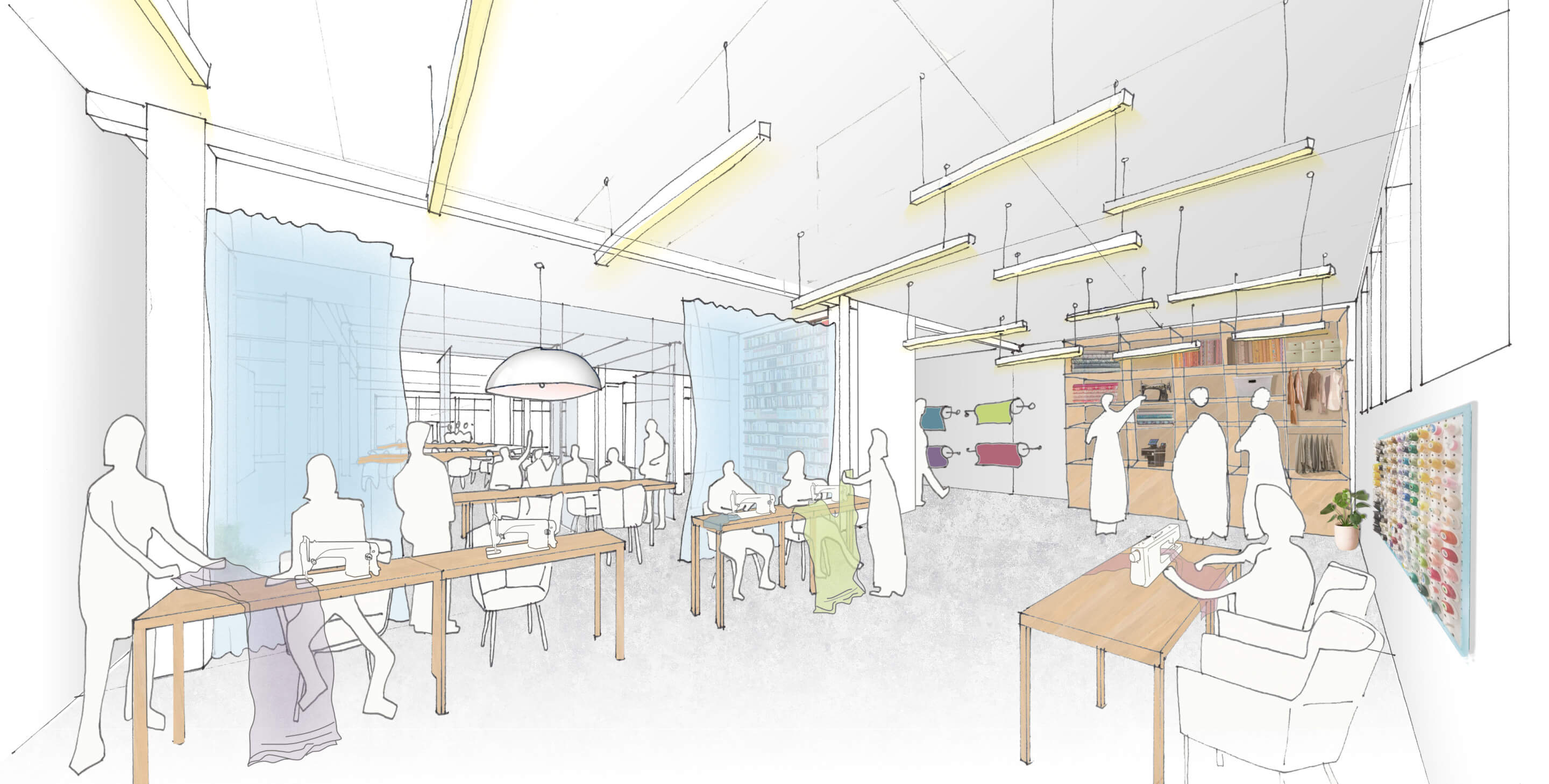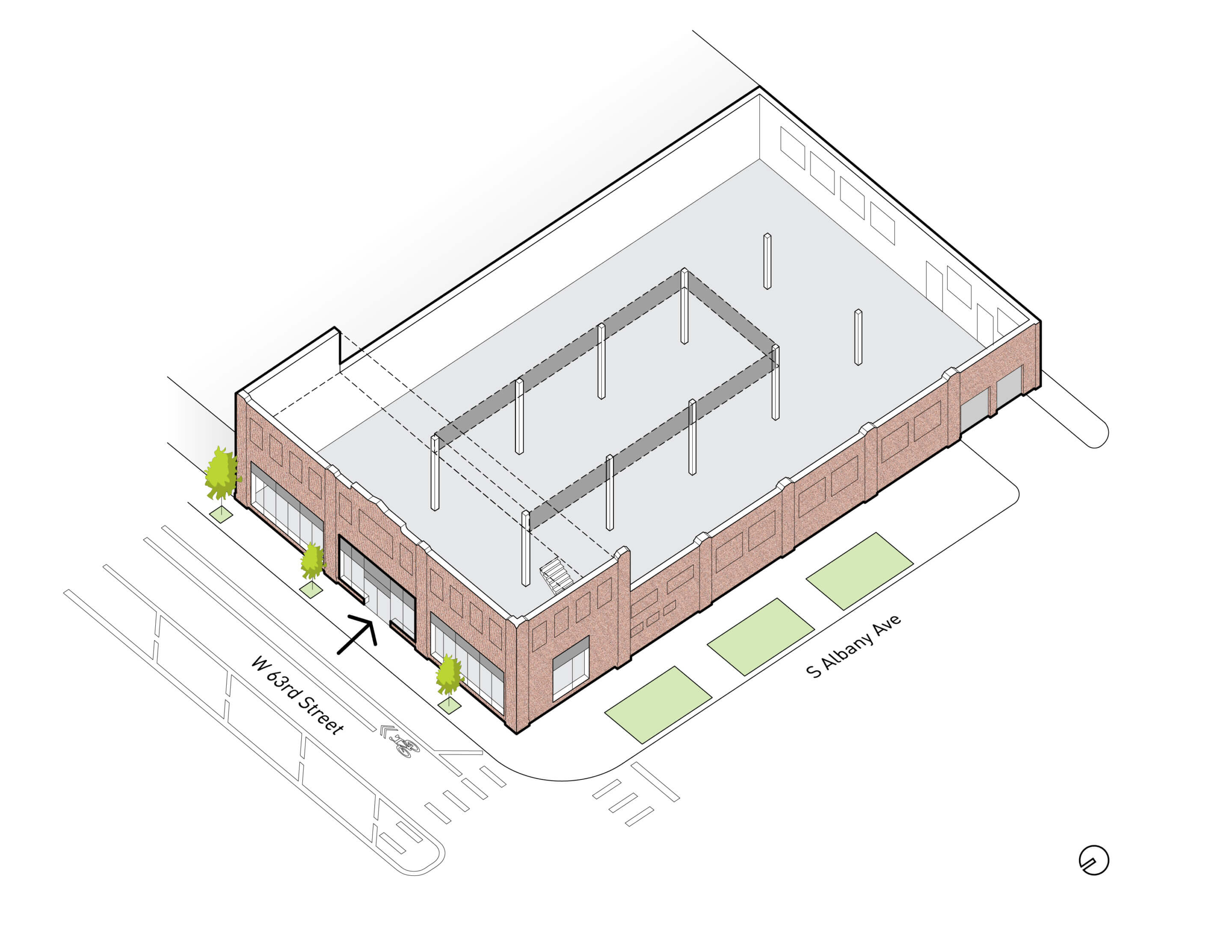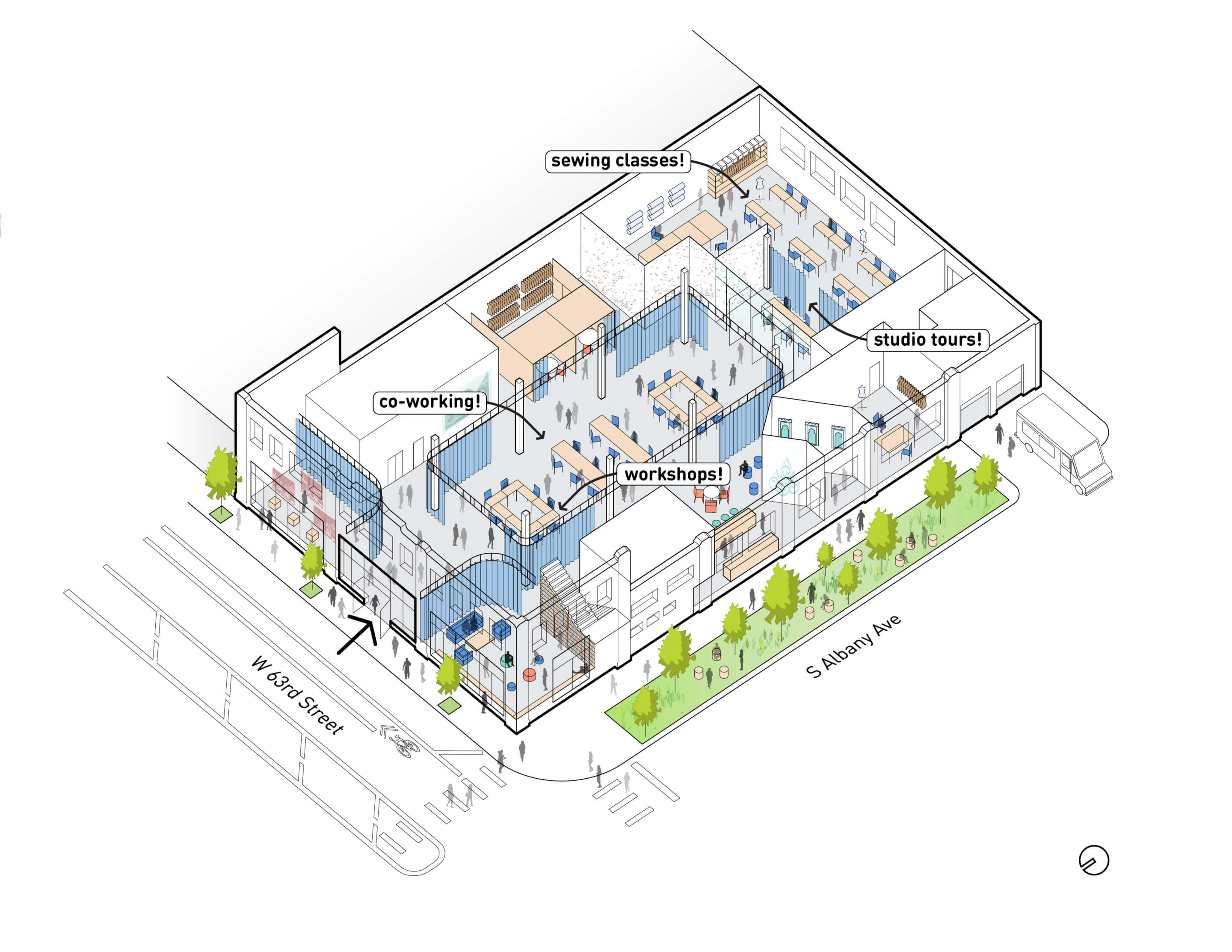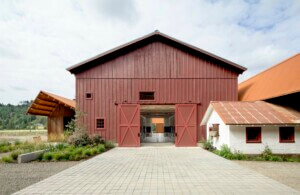Studio Gang will lead the adaptive reuse of a two-story, 1920 brick building that formerly served as a post office in southwest Chicago’s Chicago Lawn neighborhood into a multifaceted community space and manufacturing studio for Blue Tin Production. Established in 2019 by Iranian-American writer, educator, and community organizer Hoda Katebi, Blue Tin is the first apparel manufacturing workers co-operative run by immigrant, refugee, and working-class women of color in the United States. (The name of the co-op is a nod to the ubiquitous royal-blue Danish butter cookie tins used by generations of immigrant women to store sewing accessories.)
The 11,250-square-foot building at 3055 West 63rd, which was more recently home to a mini-mart before sitting empty, was purchased by Blue Tin to transform it into a 63rd House, an “innovative, radical space that meets multiple needs of the neighborhood” that will double as spacious new digs for Blue Tin. In late September, just ahead of the launch of a $2 million fundraising campaign, Blue Tin revealed anticipated features of the “abolitionist, multifunctional” 63rd House that will join their main manufacturing studio. A library, exhibition and gallery space, co-working areas for organizers and neighborhood students in need of an after school study space, a shared kitchen, offices for mental health practitioners, a media resource area, prayer and meditation room, and event space for mutual aid and political education are all on the docket. Topping the reborn century-old structure will be a rooftop space complete with a lushly planted pollinator garden, a large deck for community gatherings, and a photovoltaic array to help power the net-zero energy facility.

As detailed in a press release, Blue Tin has worked closely with Studio Gang and Black and brown youth organizations from Chicago Lawn to “assess the existing conditions of the 3055 W 63rd Street building and explore spatial and sustainable strategies for its reuse.” The project is a finalist for a $250,000 award from the City of Chicago’s Neighborhood Opportunity Fund.
“We are so happy to partner with Hoda and the rest of Blue Tin Production to support a women-led, women-owned organization that is making bold change in the fashion industry and building a strong, caring community in the process,” said Jeanne Gang, founding partner of Studio Gang, in a statement. “BTP demonstrates that a model founded on equity and environmental responsibility is not only possible—it can also result in the highest quality of craft. Partnering with their team to remake a neglected structure into a new headquarters that expands their impact and becomes an asset for the whole neighborhood is an example of the kind of micro-urbanism we are excited to help make happen.”
Annexed by the City of Chicago in the late 1880s, Chicago Lawn is centered around the Olmsted Brothers-designed Marquette Park, which, at over 300 acres, is the largest park on Chicago’s southwest side. Marquette Park was the setting of a particularly ugly moment in the Civil Rights Movement on August 5, 1966, when a group of open housing activists led by Dr. Martin Luther King, Jr. marching through the neighborhood was assailed by thousands of white residents. King himself was injured in the melee, but not seriously, when he was struck in the head with a rock. King later said that “This is a terrible thing. I’ve been in many demonstrations all across the south. But I can say that I have never seen, even in Mississippi and Alabama, mobs as hostile and as hate-filled as I’ve seen in Chicago.” Today, Sonja Henderson and John Pittman Weber’s Martin Luther King, Jr. Living Memorial, a monument sponsored by the Inner-City Muslim Action Network (IMAN) to commemorate King and Chicago’s 1960s Fair Housing Movement, is a focal point of the park.


The Chicago Lawn of today is a multi-ethnic working classic neighborhood home to a considerable Arab community (particularly immigrants from Palestine, Syria, and Jordan), a majority population of Black residents, and a sizable Hispanic population. The impact of decades of disinvestment remains a major issue in Chicago Lawn although groups like Blue Tin are working to reinvest in the community and bring vital resources and new opportunities to the southwest side.
The plans for 63rd House, as well a Blue Tin’s own contributions to the fashion industry, will be featured in an upcoming exhibition opening on November 19, 2021, as part of the ongoing Chicago Architecture Biennale. Designed by Studio Gang and Chicago-based Turkish interdisciplinary artist Hale Ekinci, the show is the first exhibition to be held at Studio Gang’s new gallery space at the firm’s home office inside of the Art Deco Polish National Alliance building at 1520 West Division Street in Wicker Park.
“Blue Tin is built as a creative approach to systems-change, tackling historic issues in the fashion industry related to gender, class, race, sustainability, and colonialism that have long remained ‘too complicated’ to address,” said Katebi, who rose to prominence as a fashion blogger and has been profiled by publications including Vogue, Dazed, and the New York Times. “Every day we get to imagine what we want the world to look like for our team and actively work to build it together—and now we’re so excited to be able to explore what this means on a larger, community level.”
AN will provide further updates as the project gets underway.











